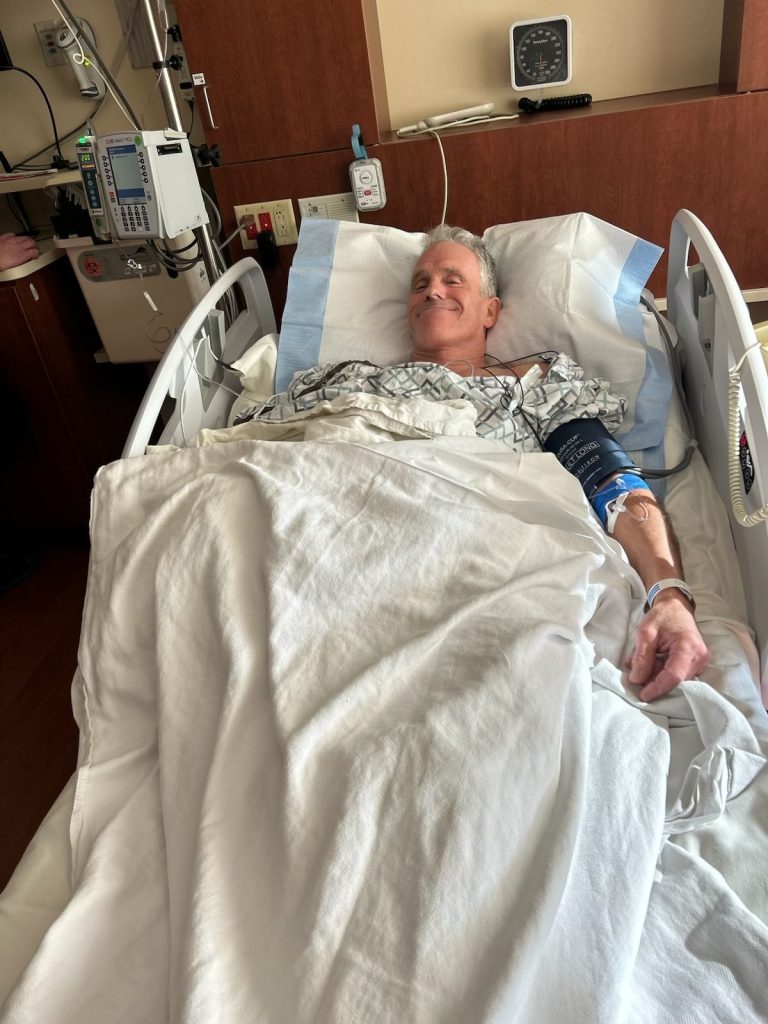Regular physical activity helps us maintain the habit of taking care of ourselves, which is the best thing we can do for ourselves and the people we love.
Emily Murray, Physical Therapist, ThedaCare
This may sound familiar. You set a goal of exercising more at the beginning of the year, only to lose steam after just a few weeks. Or worse, maybe you push yourself too hard and wind up injured.
Best intentions can fizzle or backfire without a solid plan for success in place. For tips and guidance on getting started, we checked in with two experts: Dr. Doug Connor, a Sports Medicine Physician with ThedaCare Orthopedic Care, and ThedaCare Physical Therapist Emily Murray.
Benefits of exercise
If you’ve set the intention of upping your exercise, you’ve landed on a worthwhile goal.
“There are innumerable ways that exercise is important for our health,” Dr. Connor says. “If exercise were a pill, everybody would get it.”
In fact, for some conditions, exercise offers a more effective treatment than medication, he continues.
People who exercise tend to live longer lives and enjoy a better quality of life. Physical activity improves your overall well-being as well as your physical and mental health.
Getting started
As you’re deciding what activities you want to do, focus on variety. From there, figure out what works best for you: whether that’s working out at home or in a gym, by yourself or with others, indoors or outdoors.
“I encourage people to incorporate aerobic exercise, strength, flexibility, and balance to really address all aspects of physical fitness,” Murray says.
A common exercise recommendation calls for getting at least 150 minutes of activity per week. When Dr. Connor talks with patients, however, he urges them to throw away the idea of fixating on a specific number.
While many health benefits can come from following the 150-minute guideline, everybody is different, Dr. Connor says. When people come in to see him, he offers an “exercise prescription” based on their individual needs.
“The basic concept is sitting less and moving more. If we can start there, we’re going to be all right,” he says. “Then you build up from there based on underlying medical problems, your fitness level, and what you enjoy doing.”
Finding the time
Murray acknowledges that a lot of people struggle to find time to exercise. She offers these tips:
Follow a routine, and schedule exercise into your day.
Make exercise a part of your lifestyle. That could include running around with your kids or dog each day or taking a walk after dinner.
Do what you can, with the time and resources available to you.
It’s not all or nothing. A short workout is better than no workout. You can also consider doing multiple short bouts of activity versus one long workout.
“Regular physical activity helps us maintain the habit of taking care of ourselves, which is the best thing we can do for ourselves and the people we love,” Murray says.
Exercising safely
To keep your body safe and healthy, take the time to warm up and cool down, Murray says. For warming up, it’s best to do dynamic stretching. This is a movement-based type of stretching that prepares your body for exertion. Examples include marching in place, lunges, and arm circles.
After you work out, do some static stretching. This involves standing, sitting, or lying still and holding a single position for a period of time — often around 30 to 60 seconds.
To avoid straining yourself, make sure to increase your intensity gradually. It’s also a good idea to switch up your activities to prevent overuse injuries, Murray says.
Above all, don’t push through the pain, Dr. Connor adds.
“Exercise should not be painful,” he says. “I often talk to patients about being able to finish their exercise routine, feel like they could do more, but stopping because this is more than they did last week or the week before. It’s about slow, steady progression and having an end goal in mind of where you want to be, but having a plan to get there.”
Getting injury care
Despite efforts to exercise safely, injuries and strains can happen. When they do, you have several care options.
Orthopedic Walk-in Care at ThedaCare Medical Center-Orthopedic, Spine and Pain is open seven days a week and offers an appointment-free option. To make an appointment, call (920) 831-5050 or schedule online.
For physical therapy care, you can ask your primary care provider for a referral or schedule directly using MyThedaCare. Select ‘Schedule a Visit,’ ‘Specialty Clinics,’ ‘Therapy’ to choose a location, date, and time that’s convenient for you.
The post A Strong Start: How to Begin an Exercise Routine appeared first on ThedaCare.

Leave A Comment